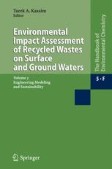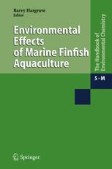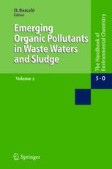Search
Search Results
-
Polycyclic Aromatic Hydrocarbons in the Great Lakes
Polycyclic aromatic hydrocarbons (PAHs) are produced during the incomplete combustion of organic material. They can also be produced through...
-
Pharmaceuticals in the River Rhine
Pharmaceuticals are introduced into the River Rhine mainly via wastewater and can be detected almost permanently in mixed samples taken over the...
-
Worldwide Occurrence of Organotins from Antifouling Paints and Effects in the Aquatic Environment
Organotins belong to the most toxic pollutants for aquatic life known so far. Widespread contamination of harbors and areas with high ship**...
-
Disruptive Behaviour (“Air Rage”): Possible Aetiology
The incidence of disruptive behaviour by passengers in civil aircraft is unknown due to under-reporting. The theoretical pathophysiology is...
-
Hazardous Organic Chemicals in Biosolids Recycled as Soil Amendments
The generation and disposal of biosolids produced at municipal wastewater treatment plants is a major environmental issue. Approximately 900 kg of...
-
Equilibrium Partitioning and Mass Transfer of Organic Chemicals Leached from Recycled Hazardous Waste Materials
Potentially hazardous waste materials (HWMs) are increasingly being recycled and used as highway construction and repair materials (CRMs). While...
-
Ecosystem Indicators of Water Quality Part II. Oxygen Production and Oxygen Demand
Seasonal transitions from oxygen production to oxygen demand at coastal aquaculture sites in southwestern New Brunswick (SWNB) can be defined in...
-
Lithium-Normalized Zinc and Copper Concentrations in Sediments as Measures of Trace Metal Enrichment due to Salmon Aquaculture
The results of metal analyses carried out on surficial sediment samples collected in the coastal waters of southwest New Brunswick and the...
-
Benthic Macrofaunal Changes Resulting from Finfish Mariculture
We present a review of the benthic macrofaunal changes that are circumstantially linked to intensive marine finfish aquaculture, or mariculture....
-
Biotic and Abiotic Transformation Pathways of Synthetic Musks in the Aquatic Environment
Synthetic musks are being transformed to intermediates or relatively stable metabolites that may exhibit a strong potential for environmental harm....
-
Organic Compounds in Paper Mill Wastewaters
This chapter is focused on the problem caused by the effluent discharges from paper and pulp mills. At present, three aspects should be considered in...
-
Evaluation Methodology for Environmental Impact Assessment of Industrial Wastes Used as Highway Materials: An Overview with Respect to U.S. EPA's Environmental Risk Assessment Framework
An evaluation methodology was developed for assessing potential ecological risks posed by constituents released from waste and industrial byproducts...
-
Organic Enrichment at Cold Water Aquaculture Sites—the Case of Coastal Newfoundland
Benthic organic matter (OM) enrichment is a frequent environmental effect of coastal aquaculture. There is a need for simple, general methods of...
-
The Role of Musk and Musk Compounds in the Fragrance Industry
An overview of the role of musk and musk compounds in the fragrance industry is given. Discovery and syntheses of representatives occurring naturally...
-
Sensory Evaluation of Indoor Air Pollution Sources
The basic biological principles of the perception mechanisms for odour and irritants are fairly well understood. Much more uncertain is how these...
-
Forensic Investigation of Leachates from Recycled Solid Wastes: An Environmental Analysis Approach
In order to study the environmental analysis and impact assessment (EAIA) of contaminants leached from road construction and repair (C&R) materials,...
-
Estrogens and Progestogens in Wastewater, Sludge, Sediments, and Soil
Estrogens and progestogens are two classes of female steroidal hormones whose presence in the environment has been associated with the appearance of...
-
Wastewater Quality Monitoring: On-Line/On-Site Measurement
Sampling and laboratory analysis are not well adapted to wastewater quality monitoring in a process control or hazards prevention context, for which...
-
Evaluation of Pesticides in Wastewaters. A Combined (Chemical and Biological) Analytical Approach
The current status of the analysis of pesticides in wastewater by chromatographic techniques and toxicity bioassays is reviewed and evaluated. When...
-
Near-Field Depositional Model for Salmon Aquaculture Waste
An analytical near-field depositional model for solids wastes (organic matter from waste feed and faeces) from open net pen culture of finfish is...
